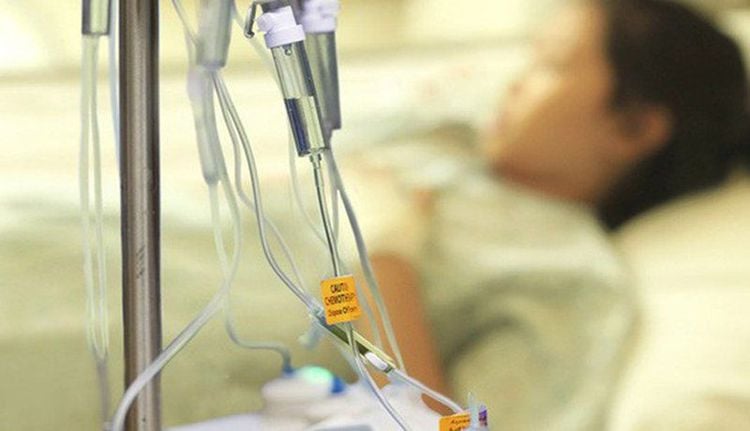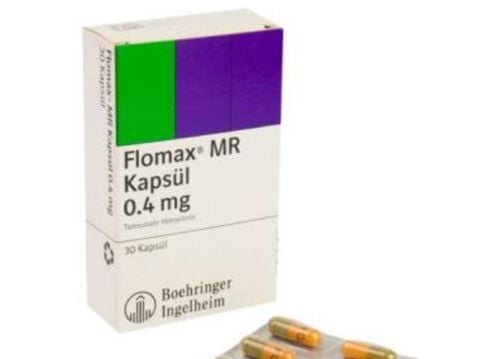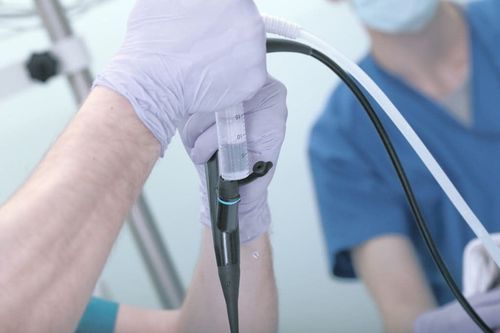This is an automatically translated article.
Article written by Doctor of Urology Department, Vinmec Central Park International General Hospital
Bladder cancer is a type of cancer that occurs in the bladder - a hollow organ located in the lower abdomen that stores urine excreted by the kidneys. Accordingly, bladder cancer, if examined and treated at an early stage, will bring a high prognosis to patients.
1. What is bladder cancer?
The bladder is a ball-shaped organ in the pelvic region that stores urine. Accordingly, bladder cancer is a type of cancer that originates in the bladder, they usually arise from the cells lining the inside of the bladder. The disease can occur at any age but is most common in the elderly.
Most of the time, bladder cancer is diagnosed at an early stage. At that time, the patient has a very high chance of being cured of the disease. However, even early-stage cancer has the potential to recur. For this reason, after treatment, people with bladder cancer are often followed for many years to detect a recurrence of the cancer.
2. Bladder Cancer Symptoms
Signs and symptoms of bladder cancer include:
Blood in the urine (hematuria): urine that is light red or cola-colored. Urine may be normal, but there is blood on microscopic examination. Urinate frequently. Painful urination. Backache . Pelvic pain. When you see the above signs or appear blood in the urine, you should go to the medical center for examination and treatment.

Đau lưng là biểu hiện phổ biến của bệnh
3. Causes of Bladder Cancer
It is not always possible to know for sure what causes bladder cancer. However, bladder cancer has been linked to smoking, parasitic infections, radiation exposure, and exposure to chemicals.
Bladder cancer occurs when cells in the bladder begin to grow abnormally. Instead of growing and dividing in an orderly manner, cells develop mutations that cause uncontrolled growth and do not die. These abnormal cells form a tumor.
Factors that can increase the risk of bladder cancer include:
Smoking: Smoking can increase the risk of bladder cancer by accumulating harmful chemicals in the urine. When you smoke, your body processes the chemicals in the smoke and excretes some in the urine. Toxic chemicals can damage the lining of the bladder, increasing the risk of cancer. Age: The risk of bladder cancer increases with age. Bladder cancer can occur at any age, but it is rarely found in people younger than 40 years old. Caucasian: Caucasians have a higher risk of bladder cancer than people of other races. Men: Men have a higher frequency of bladder cancer than women. Chemical exposure: The kidneys play an important role in filtering harmful chemicals from the blood and excreting them into the bladder. Because of this, there are certain chemicals that are thought to increase the risk of bladder cancer. These chemicals include arsenic, a chemical used in the manufacture of dyes, rubber, leather, textiles and paint products. Prior chemotherapy for cancer: Cyclophosphamide is an anti-cancer drug that may increase the risk of bladder cancer. Cancer patients who receive pelvic radiation therapy have an increased risk of bladder cancer. Certain diabetes medications: People who take the diabetes drug pioglitazone (Actos) for more than a year have an increased risk of bladder cancer. Combination diabetes medications containing pioglitazone such as pioglitazone and metformin (Actoplus Met), pioglitazone, and glimepiride (Duetact). Chronic cystitis: Chronic infections, such as long-term use of urinary catheters, may increase the risk of squamous cell bladder cancer. In some parts of the world, squamous cell carcinoma is associated with chronic bladder inflammation caused by a parasitic infection called schistosomiasis. Family factors: If a close family member has the disease, the risk of bladder cancer increases. Family history of hereditary nonpolyposis colorectal cancer, also known as syndromic. Lynch disease: May increase the risk of cancer in the urinary system, as well as in the colon, uterus, ovaries, and other organs.

Hút thuốc là một trong những nguyên nhân gây ung thư bàng quang
4. Types of Bladder Cancer
Different types of bladder cells can become cancerous. The bladder cell origin where the cancer comes from determines the type of bladder cancer. The type of bladder cancer will determine the treatment.
Types of bladder cancer include:
Transitional cell cancer : Transitional cell cancer occurs in the cells that line the inside of the bladder. Transitional cells expand when the bladder is full and contract when the bladder is empty. These cells are also found inside the ureters and urethra, where tumors can also form. Transitional cell cancer is the most common type of bladder cancer. Squamous cell carcinoma: Squamous cells appear in the bladder as a result of an inflammatory response to infection. Over time these cells can become cancerous. Squamous cell cancer is rare. However, the disease is more common in certain parts of the world, where there is a high frequency of parasitic infections in the bladder such as schistosomiasis. Adenocarcinoma: Starts from mucus-secreting gland cells in the bladder. Bladder adenocarcinoma is a rare disease. Some bladder cancers can be composed of more than one cell type.
5. Bladder cancer complications
Bladder cancer often recurs. Because of this, after successful initial treatment, the patient must be followed up for many years thereafter. The doctor will have the patient do some tests at each follow-up visit. You should ask your doctor about your next treatment plan. In general, cystoscopy, to examine the inside of the urethra and bladder, takes 3 to 6 months for the first few years and 6 months or 1 year for later.
People with bladder cancer with a high risk of recurrence may undergo more frequent testing.
6. Bladder Cancer Diagnosis
Tests and procedures used to diagnose bladder cancer may include:
Cystoscopy : during cystoscopy, the doctor inserts a lens (cystoscope) into the urinary tract (urethra). This lens has a lighting system that allows the doctor to see and examine the inside of the urethra and bladder. Your doctor will inject lubricant and a little anesthetic during the cystoscopy to help you feel comfortable. Biopsy: During cystoscopy, your doctor may insert a special instrument into your bladder to collect a sample of cells (biopsy) for testing. This procedure is sometimes called a laparoscopic bladder tumor biopsy (TURBT). TURBT can also be used for total tumor resection in the treatment of bladder cancer. TURBT is usually performed with spinal or general anesthesia. Urine cytology: A sample of a patient's urine is analyzed under a microscope to look for cancer cells. Imaging: An imaging test allows the doctor to examine the structures of the urinary tract. Sometimes a contrast medium is used intravenously to highlight the urinary tract. An intravenous urogram is a type of X-ray image that uses a contrast medium to better examine the kidneys, ureters, and bladder. X-ray, computed tomography (CT scan) is a type of X-ray that allows your doctor to better see your urinary tract and surrounding tissues. Once bladder cancer has been confirmed, your doctor may order further tests to evaluate the extent (stage) of the cancer. These tests include:
CT scan Magnetic resonance imaging (MRI) Bone Scan Chest X-ray Stages of bladder cancer:
Stage I: Cancer occurs in the lining inside of the bladder but did not invade the bladder muscle layer. Phase II. Cancer has invaded the bladder muscle but is still confined to the bladder. Phase III. Cancer cells have spread through the bladder wall to surrounding tissue. Stage IV. At this stage, cancer cells can spread to the lymph nodes and other organs, such as the bones, liver, or lungs. Treatment for bladder cancer depends on several factors, including the type and stage of the cancer, your overall health, and your treatment preferences. Discuss your options with your doctor to determine what treatments are best for you.

MRI cho phép chẩn đoán chính xác hình ảnh của ung thư bàng quang
7. Bladder Cancer Treatment
Treatments for early bladder cancer
If the cancer is very small and hasn't invaded the muscles of the bladder, your doctor may recommend surgery to remove the tumor: removal of a tumor of the internal bladder Transurethroscopy (TURBT) is often used to remove bladder cancer that is limited to the inner layer of the bladder.
During TURBT, a small metal wire loop is inserted inside the lens (cystoscope) and into the bladder. This device is used to cut and burn cancer cells with an electric current. In some cases, a high-energy laser can be used instead of an electric current. TURBT may cause painful or light urination for a few days after the procedure.
Surgery to remove the tumor and a small part of the bladder: This surgery is also called a partial cystectomy. The surgeon removes only the part of the bladder that contains cancer cells. This surgery is rarely used and may only be an option if the cancer is confined to an area of the bladder that can be easily removed without harming bladder function. Biological (immunotherapy): Biological therapy, sometimes called immunotherapy, works by activating the body's immune system to fight cancer cells. Biologic therapy for bladder cancer is usually given through the urethra and directly into the bladder (intravesical chemotherapy). Bacille Calmette-Guerin (BCG): A biologic drug used to treat bladder cancer, a type of bacteria used in the TB vaccine. The biologic drug is a synthetic version of interferon, an immune system protein that helps fight infections. The synthetic version, called interferon alfa-2b (Intron A), is sometimes used in combination with BCG. Biologics often cause flu-like symptoms and can irritate the bladder. Invasive bladder cancer surgery: If the cancer has invaded the deeper layers of the bladder wall, you may want to consider: A total cystectomy is surgery that removes the entire bladder, as well as surrounding lymph nodes. In men, cystectomy usually includes removal of the prostate gland and seminal vesicles. In women, cystectomy involves removing the uterus, ovaries, and part of the vagina. Today, robotic-assisted total cystectomy means that surgeons sit nearby and use controls to precisely move surgical instruments. Cystectomy carries a risk of infection and bleeding. In men, removing the prostate and seminal vesicles can cause erectile dysfunction. However, your surgeon tries to preserve the nerves needed for an erection. In women, removal of the ovaries causes infertility and early menopause. Urine diversion surgery: Immediately after the cystectomy, the surgeon diverts urine through a new way. There are many options, and which one is best for you depends on your medical condition and preferences. The surgeon may use a segment of the intestine to create a urine bag. Urine from the kidneys enters this reservoir and exits the body through an opening to the skin covered by a gill sac on your abdomen. In another surgery, the doctor may use a piece of intestine to create a small bag of urine inside the body. You use a catheter a few times per day to drain urine from the reservoir through an opening in your abdomen. As an alternative, your doctor may create a bladder-like bowel (neobladder) pouch. This new bladder is located inside your body and is attached to your urethra, allowing you to urinate normally. You may need to use a catheter to completely drain your urine for the first 6 months.

Ung thư bàng quang có thể được điều trị bằng phương pháp hóa trị
Chemotherapy: Chemotherapy uses drugs to kill cancer cells. Chemotherapy for bladder cancer often uses a combination of two or more chemotherapy drugs. The medicine can be given through a vein in your arm (intravenously), or it can be given directly into your bladder by pumping it through a urinary catheter. Chemotherapy may be used to kill cancer cells that may remain after surgery. Medicines may also be used before surgery. In this case, chemotherapy can shrink the tumor allowing doctors to perform a less invasive surgery. Chemotherapy is sometimes combined with radiation therapy in cases where surgery is no longer possible. Radiation therapy: Radiation therapy uses high-energy beams to kill cancer cells. Radiation from a controlled radiotherapy machine is precisely focused on an area of the body that contains cancer. Radiation therapy may be used after surgery to kill any remaining cancer cells. In some cases, radiation therapy is sometimes combined with chemotherapy when surgery is no longer possible, although this is often considered a last resort. Vinmec International General Hospital is a general hospital with the function of examining and treating diseases. Accordingly, Vinmec has also performed endoscopic diagnosis, treatment, and cancer screening at an early stage with modern medical methods, which not only brings high efficiency but also minimizes complications. disease recurrence. The great success is because Vinmec is always fully equipped with modern facilities, examination and treatment procedures are carried out by a team of experienced and qualified doctors that will bring about treatment results. optimal for customers.
To register for medical examination and treatment at Vinmec International General Hospital, you can contact Vinmec Health System nationwide, or register online HERE.













